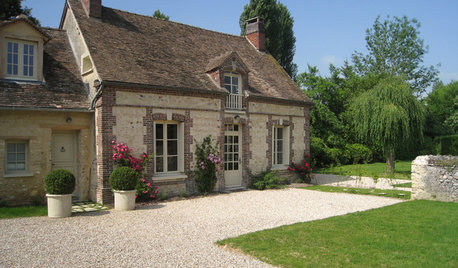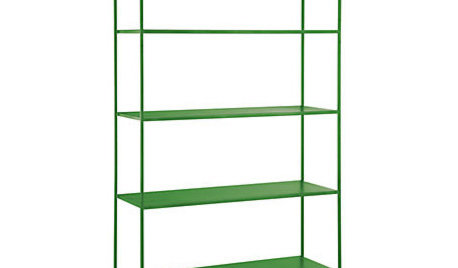Roundup
jennie_oh
15 years ago
Related Stories

ARCHITECTURERustic Roundup: 5 Barn or Barn-Inspired Homes
Homeowners are hitting the hay in spaces that recall a farm — and the interpretations range from literal to far afield
Full Story
PRODUCT PICKSGuest Picks: A Tidy Roundup of Cleaning Supplies
Practical and pretty cleansers and cleaning accessories to make housecleaning chores a pleasure
Full Story
PRODUCT PICKSGuest Picks: Travel Accessories Roundup
Take your home's great style on the road with accessories that look good and travel well
Full Story
ORGANIZINGGuest Picks: Stylish Storage Box Round-up
Stash Things Away In Style with One of These 20 Storage Options
Full Story
Guest Picks: Christmas Wreath Roundup
Go crafty, go classic or even bring in the bling — whatever your home's style, one of these wreaths can give your door that holiday spirit
Full Story
EVENTSDesign Calendar: April 19–May 10, 2012
Catch a fascinating flick, be especially kind to the planet or choose something else from our curated roundup of 5 upcoming design events
Full Story
EVENTSDesign Calendar: April 5–26, 2012
Get your mingling fix and check out the latest trends in lighting, kitchens and more with our roundup of 5 upcoming events
Full Story0

SELLING YOUR HOUSEYour Home-Selling Guide for a Faster and Better Sale
Learn staging and curb appeal tricks, how to get the best photos and more in this roundup focusing on high-impact house-selling strategies
Full Story
Guest Picks: Valentine's Day Gifts for Men
Find something for any guy in this roundup of well-designed, quirky and sometimes silly accessories and edibles
Full Story
PRODUCT PICKSGuest Picks: 21 Rave-Review Bookcases
Flip through this roundup of stylish shelves to find just the right book, toy and knickknack storage and display for you
Full StoryMore Discussions








mainegrower
ken_adrian Adrian MI cold Z5
Related Professionals
Norfolk Landscape Architects & Landscape Designers · Mountain Brook Landscape Architects & Landscape Designers · Athens Landscape Contractors · Fuquay-Varina Landscape Contractors · Longview Landscape Contractors · Milton Landscape Contractors · Vacaville Landscape Contractors · Lincoln Siding & Exteriors · Rosemont Siding & Exteriors · Guilford Siding & Exteriors · Western Springs Siding & Exteriors · Crystal Lake Decks, Patios & Outdoor Enclosures · Kyle Decks, Patios & Outdoor Enclosures · Pataskala Decks, Patios & Outdoor Enclosures · Norco Stone, Pavers & Concretebrandon7 TN_zone7
Dan _Staley (5b Sunset 2B AHS 7)
brandon7 TN_zone7
Dan _Staley (5b Sunset 2B AHS 7)
ken_adrian Adrian MI cold Z5
brandon7 TN_zone7
wisconsitom
popcornhill
vancleaveterry
brandon7 TN_zone7
diggingthedirt
helenh